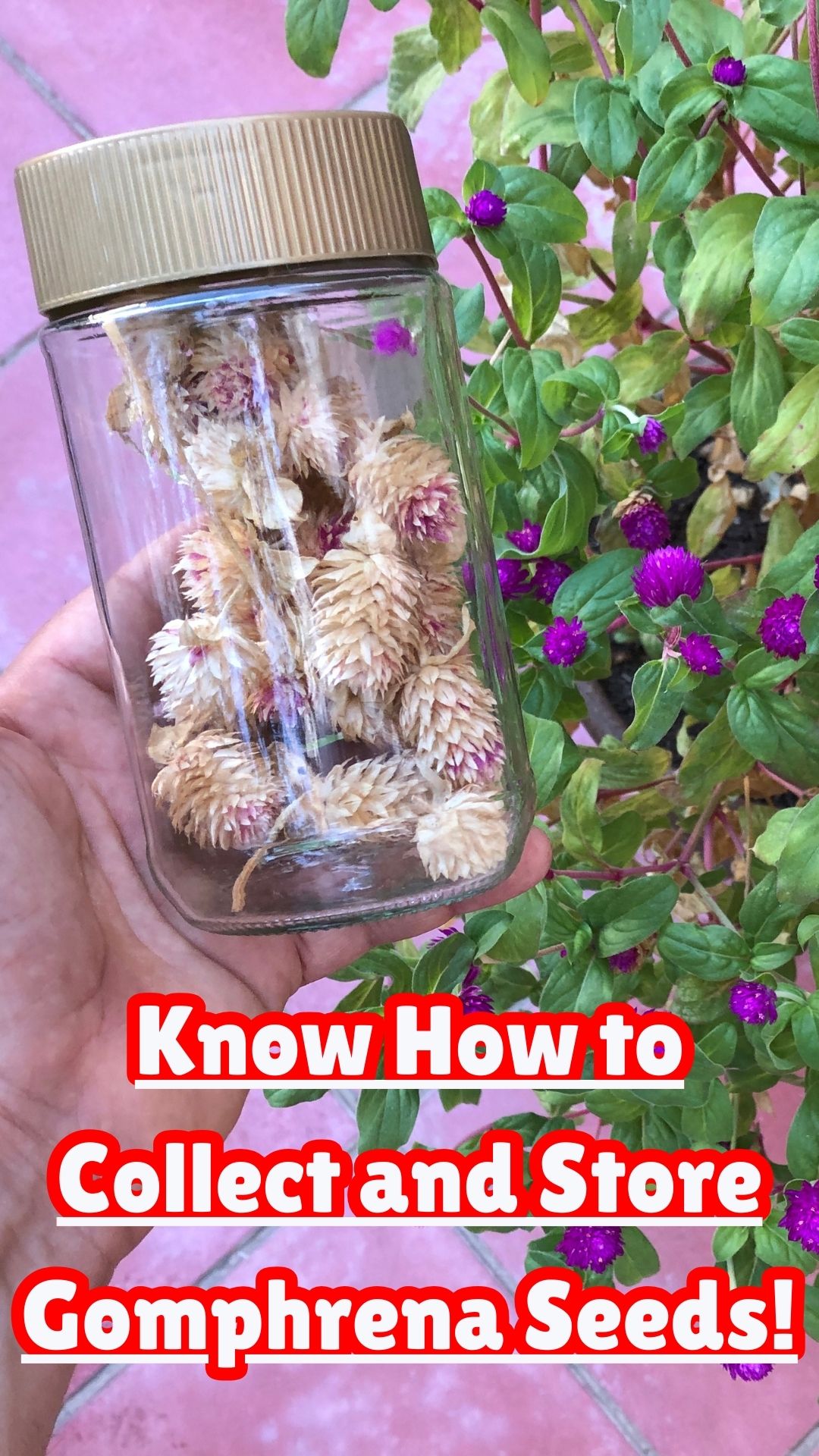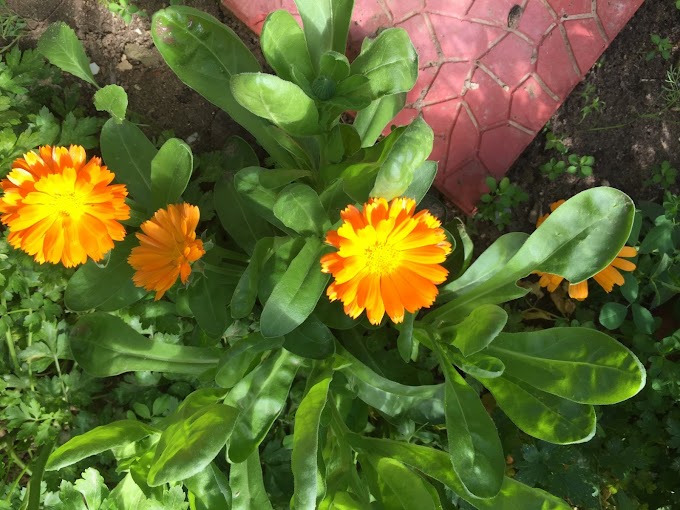Gardening is not just a hobby; it’s a rewarding experience that can save you money while beautifying your surroundings. One of the most fulfilling aspects of gardening is the ability to collect seeds from your favorite plants, ensuring that you can enjoy their beauty year after year. Today, we’re focusing on Gomphrena, commonly known as Globe Amaranth—a vibrant annual plant that thrives in a variety of colors. Let’s explore how to collect and store Gomphrena seeds for future planting!
The Beauty of Gomphrena
Gomphrena is cherished by gardeners for its stunning blooms and resilience. This hardy annual produces vibrant flowers that not only enhance your garden's aesthetic, but also make for excellent cut flowers in arrangements.
With colors ranging from pink and purple to white and yellow, Gomphrena adds a cheerful touch to any landscape.
Why Choose Gomphrena?
Long-Lasting Blooms: Gomphrena flowers retain their color even when dried, making them perfect for bouquets and floral arrangements?
Drought Tolerance: Once established, these plants are relatively drought-tolerant, making them suitable for various climates.
Pollinator Friendly: Gomphrena attracts butterflies and bees, contributing to a healthy garden ecosystem.
Low Maintenance: These plants are easy to grow and require minimal care, making them ideal for both novice and experienced gardeners.
Understanding the Life Cycle of Gomphrena
To effectively collect seeds, it’s essential to understand the life cycle of Gomphrena:
Germination: Seeds germinate in warm soil (around 70°F to 75°F) within 7 to 14 days.
Growth: The plants grow rapidly, reaching heights of 12 to 36 inches depending on the variety.
Blooming: Gomphrena typically blooms from summer through fall, producing colorful flowers that attract pollinators.
Seed Development: After flowering, the blooms begin to dry out as they mature, leading to seed formation.
By recognizing these stages, you can better plan when to collect seeds for the next planting season.
When to Collect Seeds
After enjoying the beautiful blooms of Gomphrena throughout the growing season, it’s time to think about collecting seeds. The key to successful seed collection lies in timing. Look for flowers that have turned a distinct shade of brown; this indicates that the seeds inside are fully mature and ready for harvesting.
Signs of Maturity
Color Change: Mature blooms will lose their vibrant color and become dry and brown.
Texture: The blooms will feel crispy to the touch, indicating that they have dried sufficiently.
Optimal Timing
The best time to collect seeds is typically in late summer or early fall, when the majority of blooms have matured. Monitor your plants closely, as this timing can vary based on your local climate and growing conditions.
How to Collect Gomphrena Seeds
Identify Mature Blooms: Focus on the blooms that have dried and turned brown. Avoid collecting green or partially dried flowers, as they may not produce viable seeds.
Gently Snip: Using your fingers or scissors, carefully snip off the bottom part of the bloom where the seeds are located. Handle the blooms gently to avoid damaging the seeds inside.
Collect: Place the collected blooms in a clean container or paper bag. Ensure they are not overcrowded to prevent crushing.
Tips for Effective Collection
Timing Matters: Collect seeds on a dry day when there is no moisture in the air. This helps prevent mold during storage.
Use Gloves: If you have sensitive skin or allergies, consider wearing gloves while handling the blooms.
Choose Healthy Plants: Collect seeds from healthy plants that have thrived throughout the season; this increases the chances of successful germination in future plantings.
Storing Your Seeds
Once you’ve collected your dried Gomphrena blooms, proper storage is essential to maintain seed quality:
Air Drying
Natural Drying: Allow the seeds to air dry naturally in a shady spot for about a week. Avoid covering the container during this process to ensure proper air circulation.
Using a Glass Jar
Transfer to Jar: After drying, transfer the blooms into a clean glass jar. Make sure not to pack them too tightly; this will help prevent damage.
Labeling: Remember to label the jar with the variety of Gomphrena and the year you collected them. This will help you keep track of your seed collection.
Ideal Storage Conditions
Storage: Store the jar in a cool, dark, and dry place—like a pantry or cupboard—to keep your seeds safe from light and moisture. This helps maintain their viability for the next planting season.
Additional Storage Tips
Consider Using Silica Gel Packs: To further absorb moisture inside your storage container, consider adding silica gel packs, which can help keep your seeds dry.
Check Regularly: Periodically check on your stored seeds for any signs of mold or moisture buildup; if detected, remove affected seeds immediately.
Enjoying Your Garden Year After Year
These easy techniques will guarantee a good crop of Gomphrena seeds, letting your garden grow brightly colored every year without breaking the wallet! Imagine seeing those beautiful blooms you know so well return every spring when you walk into your garden.
Planning Your Next Planting Season
As you prepare for future planting seasons using your collected seeds:
Start Indoors: Consider starting your Gomphrena seeds indoors about 6–8 weeks before your last frost date for an earlier bloom.
Transplant Carefully: When transplanting seedlings outdoors, ensure they are acclimated to outdoor conditions gradually (a process known as hardening off).
Rotate Varieties: If you have multiple varieties of Gomphrena or other flowers, consider rotating them each year for better soil health and pest management.
Watch: How to Collect and Store Gomphrena Seeds! 🌼
Conclusion
As we conclude our investigation into gathering and preserving Gomphrena seeds, it is evident that this colorful plant provides gardeners with an exciting chance to save money and maintain their gardens year after year in addition to gorgeous blossoms. You may guarantee a constant display of color and beauty in your outdoor area by being aware of the Gomphrena life cycle and adhering to the simple procedures for gathering and storing seeds.
Adopting the seed-saving method improves your gardening abilities and strengthens your bond with the natural world. Every seed you gather is an opportunity to cultivate and produce something lovely, as well as a promise of fresh life. Gomphrena is a great option that will reward your efforts with its durability and charm, whatever of your level of gardening experience.
Join Our Gardening Community
If you found this guide helpful, we’d love to hear from you! Please like this post, leave a comment with your thoughts or questions, and share it with fellow gardening enthusiasts. Together, let’s cultivate a community that celebrates the joys of gardening!
Want to grow Gomphrena and enjoy its long-lasting blooms!
FAQs About Collecting and Storing Gomphrena Seeds
What is Gomphrena?
Gomphrena, or Globe Amaranth, is an annual flowering plant known for its vibrant blooms that last long even when dried?
When is the best time to collect Gomphrena seeds?
Collect seeds when the blooms have turned brown and are fully mature—usually late summer or early fall?
How do I know if my Gomphrena seeds are viable?
Viable seeds come from mature blooms that have dried completely; look for crispy texture and rattling sounds when shaken?
Can I collect seeds from other flowers?
Yes! Many flowering plants can be harvested for seeds using similar techniques; just ensure they’re fully mature?
What’s the best way to store collected seeds?
Store them in a clean glass jar in a cool, dark place after air drying properly?
How long do Gomphrena seeds last?
When stored properly in ideal conditions, Gomphrena seeds can remain viable for several years—typically 2–3 years?
Do I need special tools to collect seeds?
No special tools are required; just use your fingers or scissors for gentle harvesting?
Can I grow Gomphrena in containers?
Yes! Gomphrena thrives well in containers as long as they receive adequate sunlight and drainage?
What conditions do Gomphrena plants prefer?
They prefer full sun (at least 6 hours daily) and well-drained soil; they are also tolerant of drought once established?
Are there different varieties of Gomphrena?
Yes! There are several varieties with different colors and sizes available for gardeners; popular ones include ‘Fireworks’ and ‘Strawberry Fields?’
How often should I water my Gomphrena plants?
Water them regularly during dry spells, but allow soil to dry out between waterings; overwatering can lead to root rot?
Can I save seeds from hybrid varieties?
While you can save seeds from hybrids like some types of Gomphrena, they may not produce plants true to type in subsequent generations?
What pests should I watch out for with Gomphrena?
Common pests include aphids and spider mites; regular monitoring can help catch infestations early?
Is it necessary to deadhead my Gomphrena plants?
Deadheading spent flowers can encourage more blooming throughout the season, but isn’t strictly necessary for seed collection?
What diseases affect Gomphrena plants?
Watch out for fungal diseases like powdery mildew; good air circulation helps prevent these issues?
Engage with us by sharing your gardening experiences or asking questions in the comments below! Happy gardening!
Affiliate Disclosure!
This website is a participant in the Amazon Services LLC Associates Program, an affiliate advertising program designed to provide a means for sites to earn advertising fees by advertising and linking to Amazon. Some of the links to products on this site are affiliate links. These are products that I've used or recommend based from homesteading experience. I do make a small commission (at no extra cost to you) from these sales. (alert-warning)













